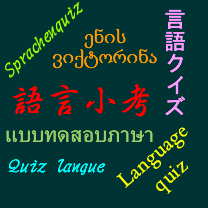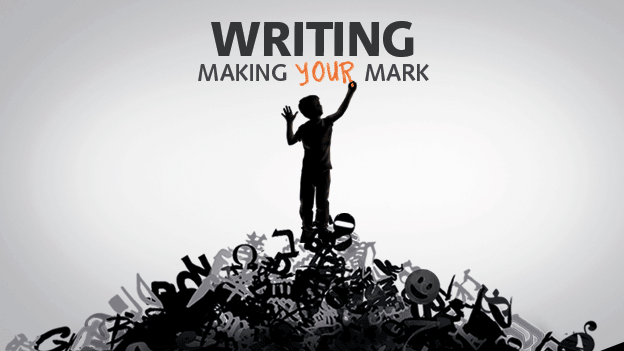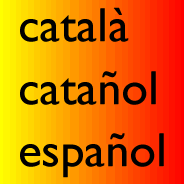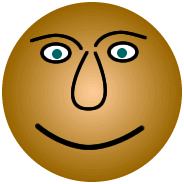
Here’s a recording in a mystery language.
Can you identify the language, and do you know where it’s spoken?

Here’s a recording in a mystery language.
Can you identify the language, and do you know where it’s spoken?
My trip to the British Library in London on Wednesday went well. Although I’ve been past the place many times, I haven’t been in before, so it was interesting to explore.
The first thing I saw was the Making Your Mark exhibition, which official opens today. I went to a press view for journalists, bloggers on Wednesday morning, although decided not to go to the big opening bash last night.
The exhibition is divided into several sections covering the history of writing, the development of writing tools and styles, the use of writing, and the future of writing. Highlights for me include ancient Egyptian, Sumerian, Mayan and Chinese inscriptions, texts and other artifacts, and books and manuscripts from Europe, Japanese, Thailand and other places with beautiful writing and illustrations.
Here are the photos I took:
You have to pay to see this exhibition, but there are a number of other free exhibitions on at the moment and others coming soon. I explored the Treasures of the British Library exhibition, which was excellent. It includes beautiful and rare books from around the world; musical scores by famous composers, such as Beethoven and Chopin; letters, notebooks and other scribblings by famous authors, including Jane Austin, Charles Dickens and Charlotte Brontë; maps, illustrations and ancient religious texts.
One thing I noticed is that most of the composers, writers and scientists whose writings are on display, had very messy handwriting. The only exceptions I noticed were the Brontë sisters. Could there be a connection between almost illegible scribbles and genius?
This afternoon I’m off to London, and tomorrow morning I’m going to the opening of an exhibition about at the British Library entitled “Writing: Making Your Mark“.

They describe it as “the extraordinary story behind one of humankind’s greatest achievements: through more than 100 objects spanning 5,000 years and seven continents.”
It includes such things as notebooks from Mozart, Alexander Fleming and James Joyce, as well examples of writing, calligraphy, writing tools and typewriters from around world.
There’s a press view and guided tour of the exhibition tomorrow morning, which I’m going to, and a big opening event on Thursday evening. The exhibtion opens to public on Friday, and runs until the end of August 2019.
I haven’t been to the British Library before, so it’ll be interesting to see it, and the exhibition sounds fascinating, and I’m really looking forward to it.

Here’s a recording in a mystery language.
Can you identify the language, and do you know where it’s spoken?
Many years ago I went to a fascinating talk by David Crystal in Bangor University about endangered languages. One of the things he said was that a good way to spread the word about the plight of such languages might be for creative people to make art, or to write songs, stories, poems, etc about them.
Since then I’ve been thinking about writing a song about this topic, and finally got round to it a few weeks ago. Today I made a recording of it, with harp accompaniment. It’s called Echoes on the Tongue, and is written from the perspective of the words of an endangered language that has never been written down, and has only a few elderly speakers.
At the end of the recording I’ve added the phrase “we are still here” spoken in endangered languages – currently Welsh, Breton, Irish, Scottish Gaelic and Manx. If you can translate this phrase into other endangered languages, and ideally make a recording of it, please do. Recordings can be sent to feedback[at]omniglot[dot]com.
What do togas, stegosauruses and thatch have in common?
These words all come from the Proto-Indo-European root *(s)teg- (cover, roof) [source].
Toga comes from the Latin togategō (I clothe) , from the Proto-Indo-European *togéh₂ (cover), from *(s)teg- (to cover) [source].
Stegosaurus comes from the Ancient Greek words στέγος (stégos – roof) and σαῦρος (saûros – lizard) [source], and στέγος comes from the Proto-Indo-European root *(s)teg- (cover, roof) [source]. The origins of σαῦρος are uncertain. So a stegosaurus is a “roof lizard”.
Thatch comes from the Old English þæc (roof-covering), from the Proto-Germanic *þaką (covering), from the Proto-Indo-European *(s)teg- (to cover) [source].
Words for house in the Celtic languages also come ultimately from the same root – tŷ (Welsh) chi (Cornish), ti (Breton), teach (Irish), taigh (Scottish Gaelic) and thie (Manx). More details.

In bilingual communities it is common to switch between languages regularly. This certainly happens a lot among the Welsh speakers I know and hear every day.
Some conversations are mostly in Welsh with occasionally bits of English every so often, some are mainly in English with some bits of Welsh, and some regularly weave between Welsh and English.
According to a friend, it might not be so common for Catalan speakers to mix Catalan and Spanish. He is learning Spanish, and also knows a bit Catalan, and plans to learn more. He believes that Catalan speakers either speak one or the other, and don’t usually mix them in one conversation. So if he went to Barcelona and spoke the little Catalan he knows mixed with Spanish, people might find this strange. Is he correct?
According to the Urban Dictionary, Catañol is the mixture of Catalán and Español that people in Catalán-speaking areas of Spain often use to converse.
According to the Wikipedia, Catañol is spoken in Barcelona, especially by young people, and is a form of Spanish with Catalan influences. It emergered during the 20th century as a result of migration to Catalonia from other parts of Spain. It is apparently considered ‘vulgar’.
Are there any bilingual or multilingual communities where language mixing is rare or even stigmatised?

Here’s a recording in a mystery language.
Can you identify the language, and do you know where it’s spoken?
The Swedish word klok [kluːk] means wise, sensible or intelligent. It doesn’t sound quite like the English word clock, but looks like it should. In fact it sounds more like cluck.
Some examples of how it’s used, and of related words:
Owls are also seen as wise in English, and although we don’t say ‘as wise as a book’, reading books can help on the road to wisdom. Poodles are not usually associated with wisdom in English, as far as I know, but it seems they are in Swedish.
In other languages, what is the equivalent of the phrase ‘as wise as an owl’?
Klok comes from the Old Norse klókr (arch, cunning, clever), from Middle Low German klôk.
The Swedish word for clock is klocka [klɔkːa], which comes from the Old Swedish klockæ, from Old Norse klokka (bell, clock), from Late Latin clocca (o’clock), probably from the Proto-Celtic *klokkos (bell), from the Proto-Indo-European *klēg-/*klōg- (onomatopoeia).
Sources: bab.la, Linguee, Ord.se, Svenska Akademiens Ordböcker, DinOrdbok, Wiktionary

In my Czech lessons this week I learnt two words that can mean face – obličej [ˈoblɪt͡ʃɛj] and tvář [tvaːr̝̊], which also means cheek. I couldn’t work out why one was used to mean face in some contexts, and the other in other contexts. Can any of you enlighten me?
Obličej comes from the Proto-Slavic ob + lice (face, cheek), which is also the root of the Czech líc (front, face, right side, face side) and líce (cheeks).
Cognates in other Slavic languages include: Polish oblicze (face, character), Russian обличье (image, character, look), and Ukrainian обли́ччя (face, character) [source].
Tvář comes from the Proto-Slavic *tvarь (creation, creature) [source]. Cognates in other Slavic languages include: Polish twarz (face), Russian тварь (creature, being, animal, beast, monster; mean, vile, worthless), and Croatian tvar (substance, material) [source].
Another Czech word for face is ksicht, from the German Gesicht (face).